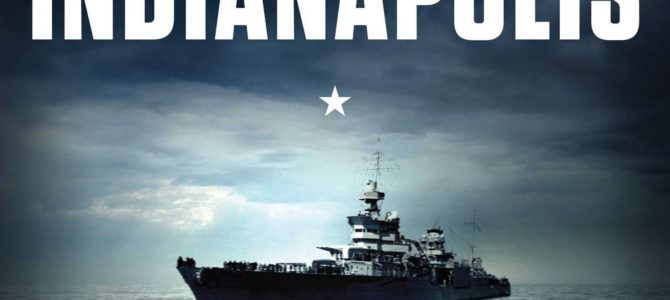
Lynn Vincent’s books have sold millions of copies. A few have been atop the New York Times bestseller list and ended up as movies, including two on which she collaborated with the main characters: Same Kind of Different as Me and Heaven is for Real. She is, in short, the most successful writer of narrative nonfiction you may have heard of but can’t recall where from. (She was also a colleague of mine at World Magazine.)
On July 17 her latest book will come out: Indianapolis: The True Story of the Worst Sea Disaster in U.S. Naval History and the Fifty-Year Fight to Exonerate an Innocent Man. She co-authored it with documentary filmmaker Sara Vladic, who spent more than a decade interviewing survivors.
A New Yorker profile of Vincent published in 2012 noted, accurately, that she writes stories of redemption about characters who struggle with evil. In this story the authors cover several different kinds of evil and there’s clearly redemption, but it’s not the sort of redemption you normally find in books or movies. It’s better, because it’s more real.
The U.S.S. Indianapolis, skippered by Capt. Charles McVay III, was the flagship battle cruiser of the U.S. fleet in the Pacific theater in the closing years of World War II. Her crew received a top-secret assignment to deliver the core for the first atomic bomb, Little Boy, to a U.S. airbase on a Pacific island. They delivered the uranium and a few days later, just after midnight on July 30, 1945, a prowling Japanese submarine stumbled upon the Indianapolis in the middle of the Philippine Sea and sunk her with two torpedoes.
Of 1,195 men on board, perhaps 900 made it alive into the ocean. But because of a series of coincidences and screw-ups, the Navy didn’t even realize its own flagship had gone down until a passing plane happened to spot some survivors floating in the massive oil slick four days later. It took still more time for rescue ships to arrive and by then hundreds of sailors had gone down. Some slipped into the depths after expiring from their wounds or exhaustion, some splashed to their doom while hallucinating, and many others were dragged into the depths by sharks drawn to the smell of fresh blood. (Quint’s monologue from the film Jaws would later make the tragedy famous for the generations after World War II.)
A total of 316 men survived, including McVay. The ordeal was horrible beyond words, so Vincent and Vladic do the right thing and tell this riveting story in spare, clean prose. They provide an astonishing amount of detail gleaned from their years of archival research and interviews, including with the Japanese submarine captain who took the Indianapolis down.
Naturally, rather than tarnish the image of its top brass, whose intelligence operations should have alerted McVay to the presence of an enemy sub, the Navy made him the scapegoat. The last third of the book is devoted to eviscerating the Navy’s laughably unjust court martial of McVay—and the aforementioned research clearly shows how unfair it was—and the decades-long effort to clear his name. So the book has redemption, of a sort, given that McVay took his own life in 1968 and wasn’t officially cleared until 2001.
Often lost in these sorts of stories is the fine line between heroes and—well, they’re not villains, exactly, but they are certainly not heroes. Indianapolis shows the stunning courage of the sailors—mostly young men barely out of high school—who clung to wounded buddies at the risk of their own lives, beat off sharks with their fists, and saved their last drops of fresh water for dying men.
But the book also records how some survivors shoved drowning sailors away from their rafts, scarfed down the last of their rations without sharing, and knifed those whose crack-ups threatened the group. Their heartlessness is as appalling as other sailors’ selflessness is inspiring. We don’t know who those men were or how many were among the 316 survivors. We just know that those things happened, and until the ship went down there was no way to tell which sailors were going to sacrifice themselves for their shipmates and which were going to sacrifice their shipmates for themselves.
The lesson, of course, is that any one of us might have gone either way. The New Yorker profile accused Vincent of telling simplistic morality plays for conservative Christians, of good triumphing over evil, but Indianapolis shows us how in human experience good and evil, faith and brutality, hope and despair, can mingle and mix in unexpected and sometimes shocking ways. We like to think the best of ourselves, but the choices we make really do reflect who we are—and what we are is never all good or all bad.
The book ends noting that in August of 2017 a search team finally found the remains of the Indianapolis on the bottom of the Philippine Sea. By then, only 19 survivors were alive to hear the news. Finding the Indy, wrote Vincent and Vladic, “provided a measure of peace, but it didn’t change the outcome.” It’s a good reminder that closure is nice, but redemption belongs to God.









